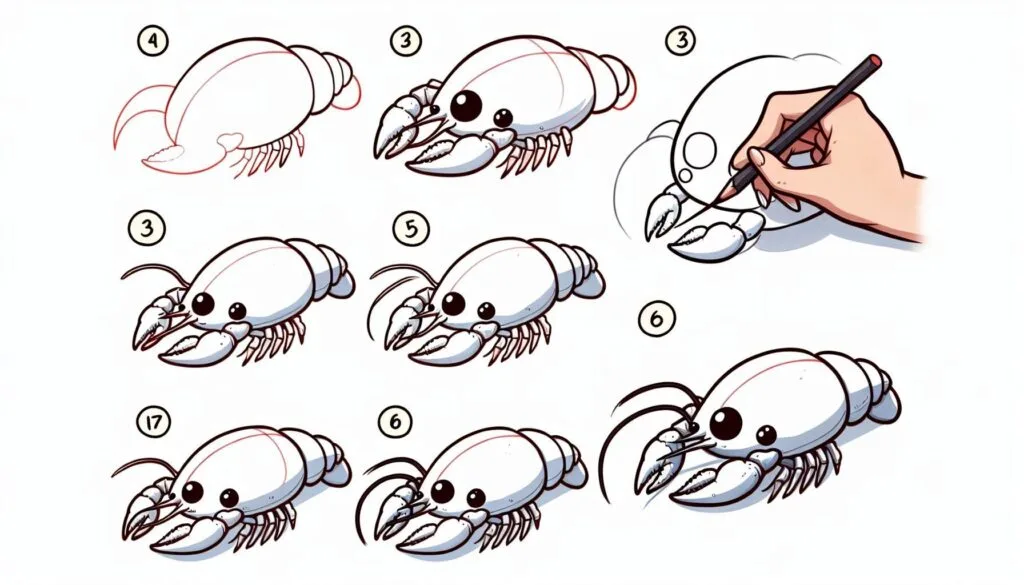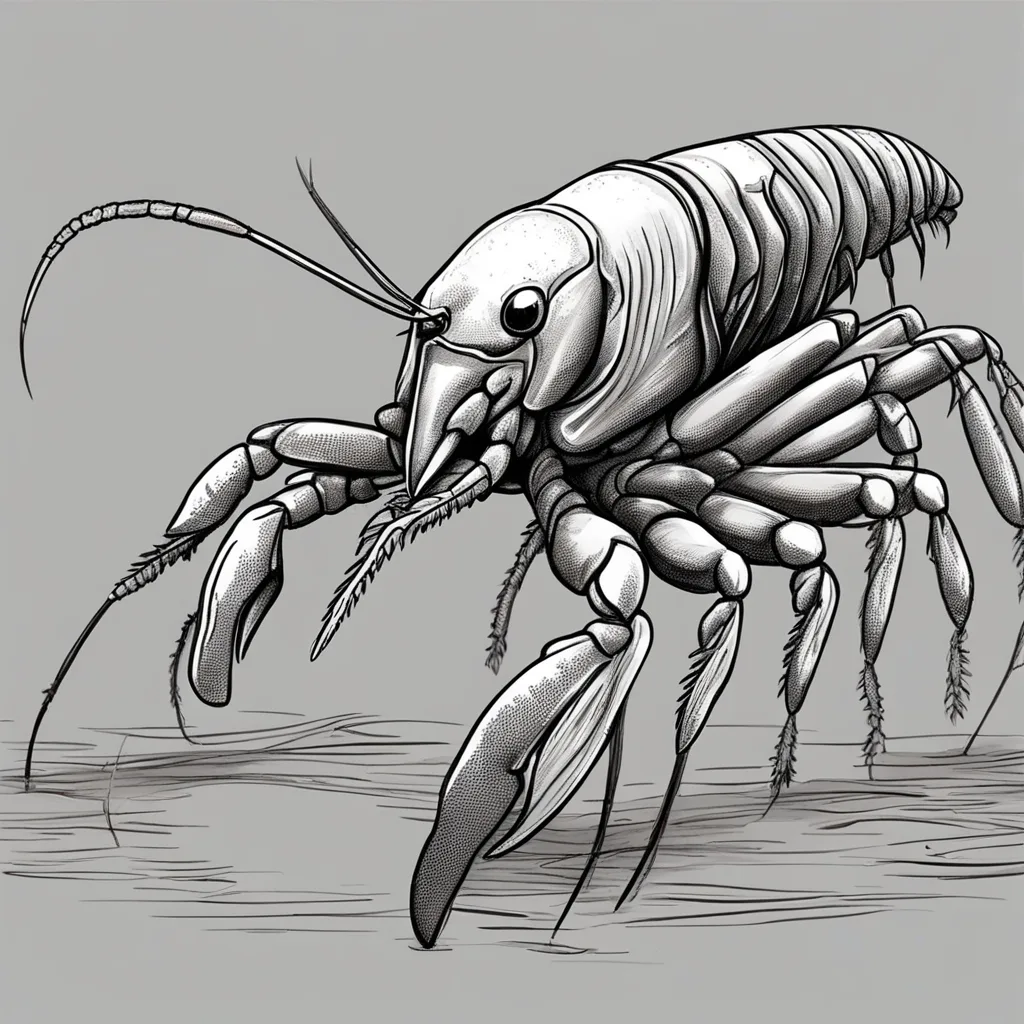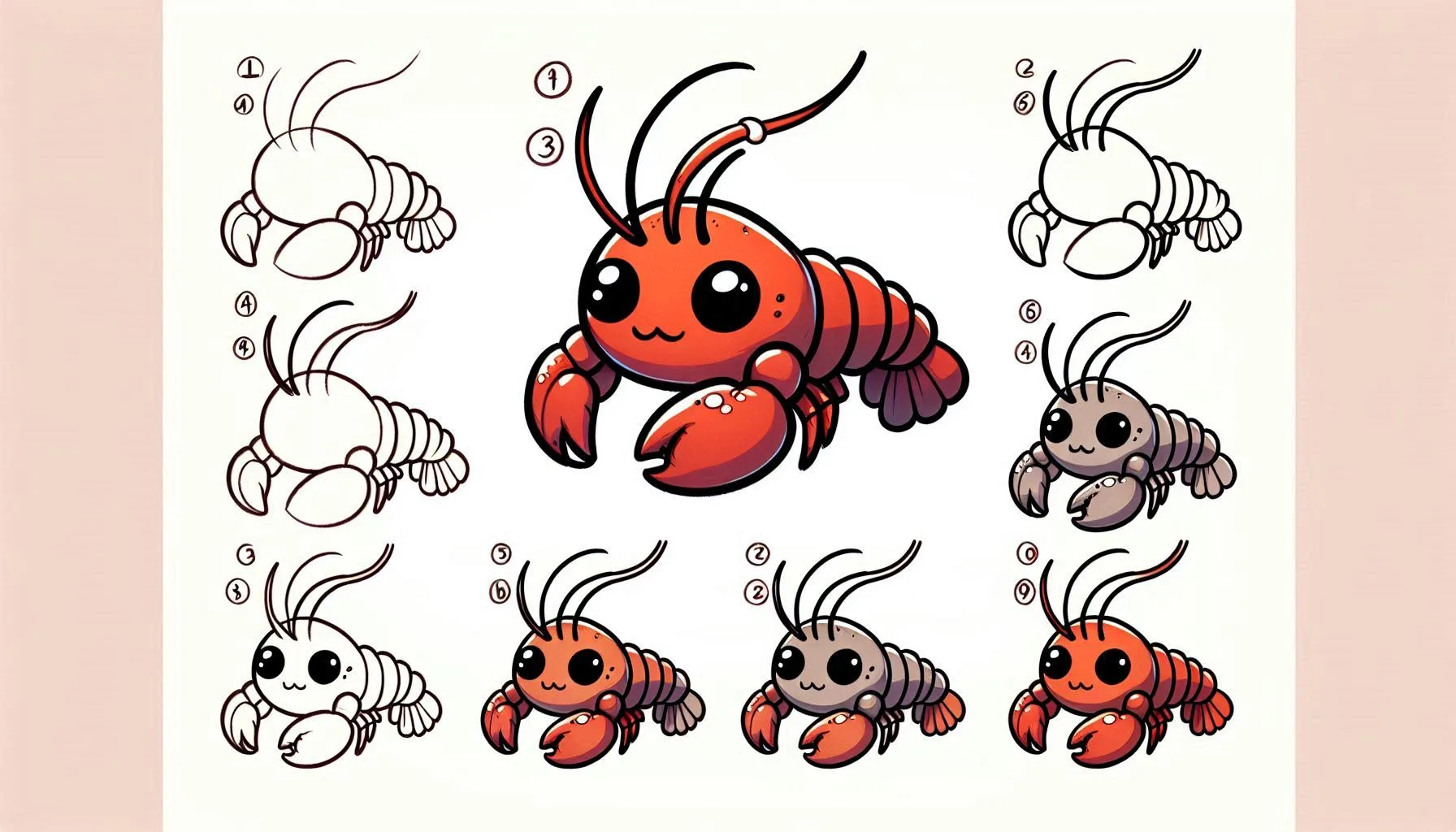Drawing a crawfish can be a fun and thrilling experience! Crawfish, also known as crayfish or freshwater lobsters, have distinctive shapes and features that make them a fascinating subject to draw. Creating artwork featuring crawfish can be a delightful and fulfilling endeavor, thanks to their unique physical features and captivating appearance. Let’s gather our art supplies, draw inspiration from these adorable creatures, and collaborate on an incredible artwork!
Table of Contents
The Joy of Illustrating Distinctive Characteristics
Creating a drawing of a crawfish is quite thrilling as they possess a multitude of captivating features to capture! Explore the fascinating world of creatures with unique features, such as their powerful claws, intricate antennae, and segmented bodies. Enhance your drawing skills by capturing the diverse textures and shapes they possess. This is an excellent method for enhancing your skills and adding a touch of realism and intricacy to your artwork.
The Exciting Task of Capturing Texture and Detail
Crawfish have tough, textured exoskeletons that can be quite enjoyable to recreate in a drawing. By emphasizing shading and line work, the texture of the crawfish’s shell can be brought to life, giving it a three-dimensional appearance. This challenge will help you enhance your skills in portraying a variety of surfaces and materials.
The Excitement of Exploring Aquatic Life
Discovering how to draw a crawfish opens up a fascinating realm of underwater creatures. Exploring the world of these captivating creatures found in rivers, streams, and lakes can provide valuable insights into their distinct traits and locomotion. It’s an excellent opportunity to explore the wonders of nature and gain a deeper understanding of our surroundings.
Steps: How to Draw a Crawfish
First, start by drawing the outline of the body.
Begin by drawing a lengthy, curved oval shape to represent the body of the crawfish. Ensure that the body has a slightly wider shape at the front, gradually narrowing towards the back. This curved shape will help give your crawfish a realistic and authentic pose.
Step 2: Incorporate the Head and Claws
Begin by sketching a petite, curved form at the forefront of the figure to represent the head. Draw two large claws from each side of the head. The claws should have a gentle, curved shape with a pointed tip. Don’t forget to incorporate some jagged lines into the claws to capture their rough edges and texture.
Step 3: Create the Segmented Body
Segment the body by using curved lines that mimic its contours. These segments symbolize the crawfish’s exoskeleton, which provides a sturdy shield for its delicate interior. Ensure that the segments are evenly spaced to create a more organic appearance in your drawing.
Step 4: Now it’s time to add the legs and antennae.
Draw several pairs of small, jointed legs extending downwards below the body. It is important for each leg to have multiple segments, with a small, sharp tip at the end. Next, sketch two elegant, sweeping antennae that gracefully extend from the head, curving outward and upward. These antennae assist the crawfish in perceiving its environment.
Step 5: Now let’s move on to drawing the tail and uropods.
Towards the rear of the body, a fan-shaped tail composed of multiple overlapping sections, called the uropods, can be drawn. This tail is essential for the crawfish to navigate and move gracefully through the water. Ensure that the sections are thorough and conform to the shape of the body.
Step 6: Polish the Outline
With a darker pencil or pen, trace over the outline of your crawfish to ensure that all the segments, legs, claws, and antennae are clearly defined. Remove any additional instructions to tidy up your drawing and get it ready for shading and adding details.
Step 7: Enhance the visual appeal with texture and shading.
To enhance the lifelike appearance of your crawfish, consider incorporating shading to the body, claws, and legs. This will effectively capture the intricate texture of the exoskeleton. Utilize cross-hatching or stippling techniques to achieve a textured, uneven look. Pay attention to the areas where shadows would naturally appear, such as beneath the claws and along the body’s segments.

Theme 1: Embracing the Joy of Creating Distinctive Artwork
Hooray! Let’s dive into the joy of creating distinct characteristics! Crawfish possess formidable claws, elongated antennae, and segmented bodies, which make them incredibly captivating subjects for artistic representation. By capturing these details, you can create a realistic drawing that showcases your talent and brings your crawfish to life on the page. It’s a wonderful chance to hone your skills in capturing various textures and shapes!
Theme 2: Exploring the Complexity of Capturing Texture and Detail
When it comes to drawing a crawfish, it’s all about capturing its unique texture and intricate details. Their sturdy exoskeletons are adorned with tiny ridges and bumps, providing them with ample protection in their natural habitat. By emphasizing shading and line work, you can recreate these textures in your drawing, resulting in a lifelike appearance for your crawfish. It’s an enjoyable challenge that will enhance your skills in portraying various surfaces and materials in your artwork!
Theme 3: Exploring the Fascinating World of Aquatic Life
Discovering the wonders of aquatic life is an essential aspect of capturing the essence of a crawfish. These captivating creatures inhabit rivers, streams, and lakes, and sketching them allows for a deeper understanding of their distinct traits and locomotion. It’s an excellent opportunity to explore the wonders of nature and gain a deeper understanding of our surroundings. Additionally, it provides an enjoyable opportunity to discover the wonders of the underwater realm without leaving the house!
Conclusion
Creating a drawing of a crawfish can be an enjoyable and fulfilling activity that pushes you to depict its distinct characteristics, textures, and intricacies. By following these steps and themes, you can create a realistic drawing that highlights your artistic abilities and passion for underwater creatures. Get your pencils ready and immerse yourself in the fascinating underwater world. Let your creativity flow as you draw a crawfish that seems to come to life on the page. Enjoy the process and have fun!

For a super fun and simple guide on how to draw a barnacle, you can find step-by-step instructions right here! This fun tutorial provides easy steps, allowing young creators to dive into their imagination while discovering these amazing sea animals!





